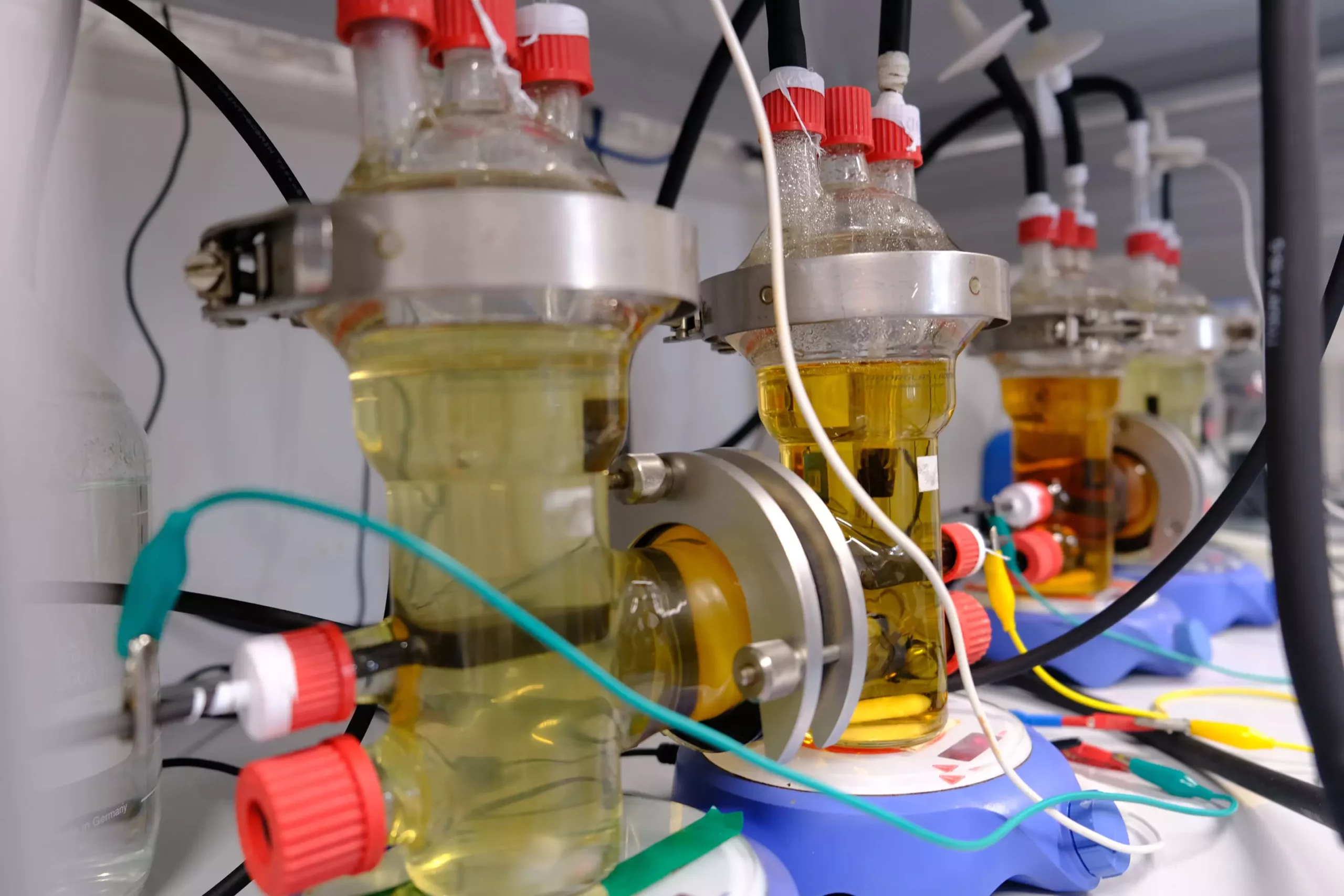Researchers at the Leibniz Institute for Natural Product Research and Infection Biology have been able to confirm experimentally for the first time that bacteria use electrons from hydrogen and can produce more chemical substances than previously known. They have published their research in the journal Green Chemistry. Microbial electrosynthesis is a technology that can bind carbon dioxide, produce ethanol and other organic compounds that can be used as fuel, and thus store excess electricity. However, the technology has so far failed to achieve any significant breakthrough towards commercialization. This is mainly because the biology behind the process has so far been regarded as a kind of black box.
The researchers were able to show that bacteria do not directly absorb the electrons supplied by electric current, but instead use hydrogen to transfer the electrons. This had long been suspected as a possibility, but until now no one had provided experimental proof. They also found that the method could produce even more useful chemicals than previously thought and optimized the process for the highest possible yields.
How Microbial Electrosynthesis Works
In microbial electrosynthesis, electricity is applied to an aqueous nutrient solution containing microorganisms, and carbon dioxide is added at the same time. The microorganisms use the electricity and carbon to produce organic compounds such as ethanol or acetate. To do this, they use the supplied electrons. Until now, it was unclear how this process works biologically.
When electricity and carbon dioxide are applied, water is split into hydrogen and oxygen. The researchers thought it more likely that the microbes were using hydrogen for their biosynthesis. Until now, no one has really measured hydrogen directly in the system. The researchers set up the MES reactor so that they can precisely control all parameters. To do this, they use a pure culture with the bacterium Clostridium ljungdahlii in a range of different concentrations. In addition, they can control the electric current flow and measure the hydrogen produced at the electrode and the hydrogen escaping from the liquid using microsensors.
Optimizing the Processes of Microbial Electrosynthesis
The research team was able to optimize voltage and bacterial concentration for the highest possible acetate yields. They had the highest acetate values achieved to date for a pure culture of bacteria. As a side result, they also found that amino compounds were formed that the bacteria do not normally produce. The work also showed that reactions between the nutrient medium and the cathode, which had not been described before, occur, apparently accelerating the synthesis process.
The team now wants to optimize the processes even further and specifically explore the previous findings. Amino compounds are very interesting for the chemical industry, and the bacteria they used are also already in industrial use. They may have thus discovered a new production method for such chemicals. Overall, the results should help make microbial electrosynthesis commercially viable. The Bio Pilot Plant is collaborating on this and partnering with process engineers to develop larger reactors for MES.



Leave a Reply